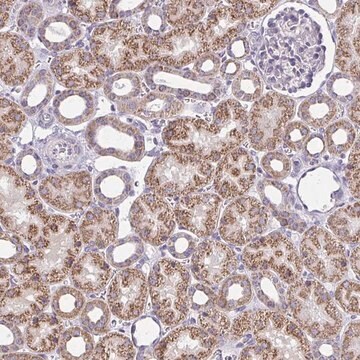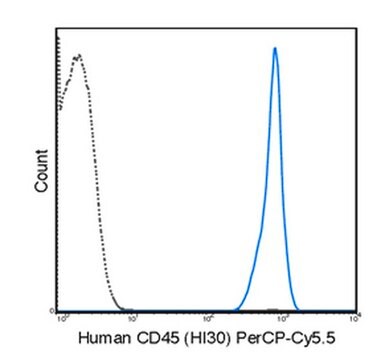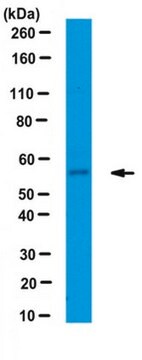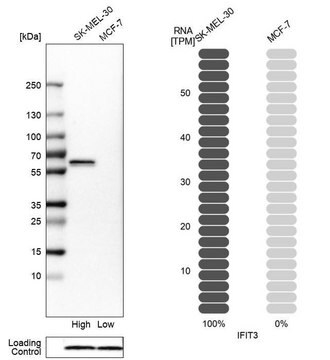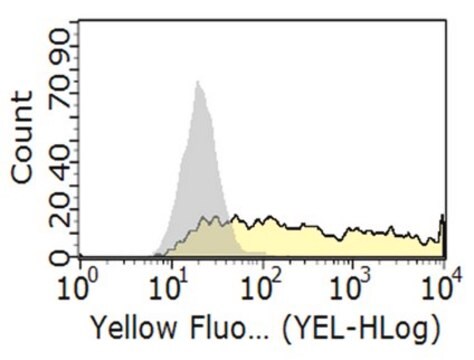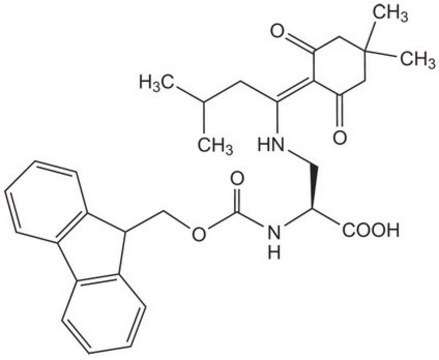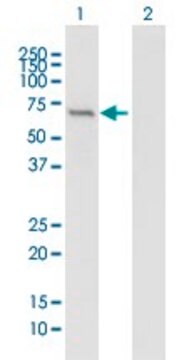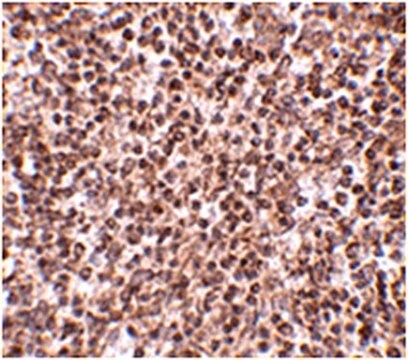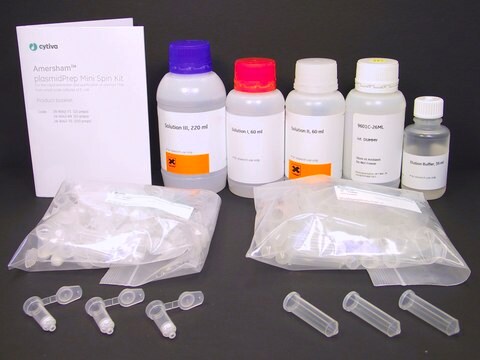ABF1048
Anti-IFIT3 Antibody
serum, from rabbit
Synonyme(s) :
Interferon-induced protein with tetratricopeptide repeats 3, IFIT-3, Glucocorticoid-attenuated response gene 49 protein, GARG-49, P49, IRG2, IFIT3
About This Item
Produits recommandés
Source biologique
rabbit
Niveau de qualité
Forme d'anticorps
serum
Type de produit anticorps
primary antibodies
Clone
polyclonal
Espèces réactives
mouse, human
Technique(s)
flow cytometry: suitable
immunocytochemistry: suitable
immunohistochemistry: suitable (paraffin)
immunoprecipitation (IP): suitable
western blot: suitable
Numéro d'accès NCBI
Numéro d'accès UniProt
Conditions d'expédition
wet ice
Modification post-traductionnelle de la cible
unmodified
Informations sur le gène
human ... IFIT3(3437)
Description générale
Spécificité
Immunogène
Application
Inflammation & Immunology
Immunoglobulins & Immunology
Western Blotting Analysis: A representative lot detected Ifit3/ISG49 induction in RAW264.7 and wild-type, but not IRF3 or Stat1 knockout, MEFs upon Sendai virus/SeV infection, dsRNA or INF-beta stimulation in cultures, as well as in liver/lung/spleen/colon tissues from mice after dsRNA or INF-alpha i.v. injection (Fensterl, V., et al. (2008). J Virol. 82(22):11045-11053).
Western Blotting Analysis: A representative lot detected differential Ifit3/ISG49 inductions between murine MPC podocytes and primary murine glomerular mesangial cells in response to Sendai virus (SeV), encephalomyocarditis virus (EMCV), and vesicular stomatitis virus (VSV) infection (Fensterl, V., et al. (2008). J Virol. 82(22):11045-11053).
Western Blotting Analysis: A representative lot selectively detected exogenously expressed murine Ifit3/ISG49 and human IFIT3/ISG60, but not murine Ifit1/ISG56 or Ifit2/ISG54, in transfected HT1080 cells (Fensterl, V., et al. (2008). J Virol. 82(22):11045-11053).
Western Blotting Analysis: A representative lot detected Ifit3/ISG49 induction in IFN-alpha-stimulated primary murine spleen B cells and in IFN-beta-stimulated MEFs (Fensterl, V., et al. (2008). J Virol. 82(22):11045-11053; Fensterl, V., et al. (2012). PLoS Pathog. 8(5):e1002712).
Immunoprecipitation Analysis: A representative lot selectively immunoprecipitated exogenously expressed murine Ifit3/ISG49, but not Ifit1/ISG56, from transfected MEFs (Fensterl, V., et al. (2008). J Virol. 82(22):11045-11053).
Immunohistochemistry Analysis: A representative lot detected differential Ifit3/ISG49 induction among various cell types in formaldehyde-fixed, paraffin-embedded kidney tissue sections from mice after Sendai virus (SeV) or dsRNA i.v. injection (Fensterl, V., et al. (2008). J Virol. 82(22):11045-11053).
Flow Cytometry Analysis: A representative lot detected IFN-beta-induced Ifit3/ISG49 immunoreactivity using murine bone marrow-derived dendritic cells, as well as isolated CD3+ (T cells) and B220+ (B cells) peripheral blood cells (Fensterl, V., et al. (2008). J Virol. 82(22):11045-11053).
Immunocytochemistry Analysis: A representative lot detected IFN-beta-induced Ifit3/ISG49 expression in MEFs (Fensterl, V., et al. (2008). J Virol. 82(22):11045-11053).
Flow Cytometry Analysis: A representative lot (1:500 dilution) detected IFN-beta-induced Ifit3/ISG49 immunoreactivity in primary murine macrophages (Courtesy of Dr. Ganes C. Sen, Cleveland Clinic, OH).
Qualité
Western Blotting Analysis: A 1:500 dilution of this antibody detected IFIT3 in 10 µg of IFN beta treated RAW264.7 cell lysate.
Description de la cible
Forme physique
Stockage et stabilité
Handling Recommendations: Upon receipt and prior to removing the cap, centrifuge the vial and gently mix the solution. Aliquot into microcentrifuge tubes and store at -20°C. Avoid repeated freeze/thaw cycles, which may damage IgG and affect product performance.
Autres remarques
Clause de non-responsabilité
Vous ne trouvez pas le bon produit ?
Essayez notre Outil de sélection de produits.
Code de la classe de stockage
12 - Non Combustible Liquids
Classe de danger pour l'eau (WGK)
WGK 1
Point d'éclair (°F)
Not applicable
Point d'éclair (°C)
Not applicable
Certificats d'analyse (COA)
Recherchez un Certificats d'analyse (COA) en saisissant le numéro de lot du produit. Les numéros de lot figurent sur l'étiquette du produit après les mots "Lot" ou "Batch".
Déjà en possession de ce produit ?
Retrouvez la documentation relative aux produits que vous avez récemment achetés dans la Bibliothèque de documents.
Notre équipe de scientifiques dispose d'une expérience dans tous les secteurs de la recherche, notamment en sciences de la vie, science des matériaux, synthèse chimique, chromatographie, analyse et dans de nombreux autres domaines..
Contacter notre Service technique